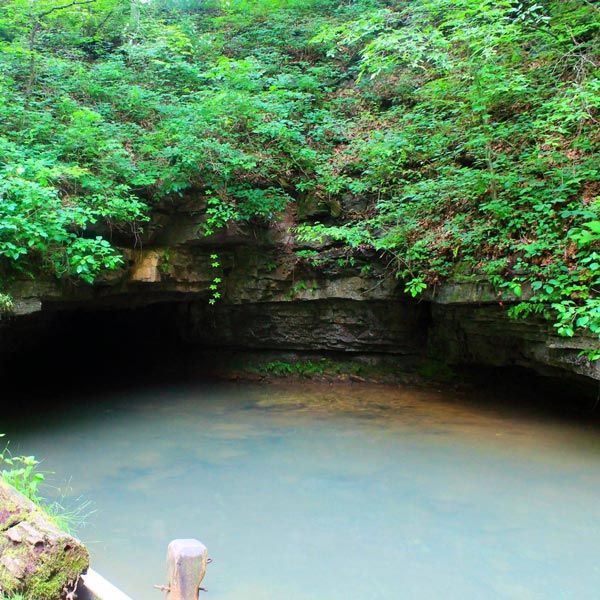Dive into Darkness: Raymond’s Heart-Stopping Descent into Twin Caverns


| Incident Location | Diver Names |
|---|---|
| Mariana, Florida – Twin Caverns in Mill Pond | Raymond, Alexandra |
Enter the dark and twisted world of the Twin Cave Family Tragedy. Uncover the secrets and horrors of this cave diving disaster that will leave you breathless. Today, we are exploring Mariana Florida’s Mill Pond, which has many lovely qualities. This is a tale about cave diving—Raymond and his family entered a dangerous cave.
The Perils of Twin Caverns
The Crystal Blue Waters of Twin Caverns can appeal to divers, but their beauty masks their perils. The first maze-like caverns are usually black, disconcerting divers, and silt particles at the bottom may reduce visibility. The Twin Caverns are rough and can damage scuba gear, causing breakdowns. Andy Pitkin, a cave explorer, warns about rock and shell particles in fast-flowing spring water that could jam diving equipment.
7 August 2013 Andrea Rance, Jamie Rance, and Samer Lawand were finishing their last safety stop at Twin Caves. The water was calm, visibility decent, and their diving gear and diving computers showed everything normal. Suddenly, three other divers swam past them and into the cave.
The first was a young woman, 22 years old, kicking violently and stirring clouds of silt. Behind her were her father and brother, only 19. The Rances barely reached their gold line before the water turned opaque.
The Invisible Trap
Andrea felt a brush against her shoulder—a diver moving toward the surface. It was the young man, exiting blindly into the dark water. The Rances surfaced quickly, with Samer following from a nearby entrance.
When asked why they had entered the cave, the young man said, “It’s fine—my dad is a dive instructor.” The father surfaced shortly after, but the daughter never appeared.
The Hunt in Zero Visibility
Panic set in as the divers tried to find the cave entrance. The pond above was shallow, just 10 feet deep, but the bottom hid a small sinkhole.
- The twin entrances are invisible once the silt is disturbed.
- Even experienced divers can lose orientation in seconds.
- Without visibility, the cave becomes a maze with deadly consequences.
The clouded water swallowed the entrances. Andrea, Jamie, and Samer could only hover, eyes straining, trying to locate the missing diver. The pond, calm on the surface, hid a lethal trap beneath.
As panic grew, Samer Lawand’s wife, Karen Brinkman, was waiting on a pontoon boat with a charged cell phone. She immediately contacted Edd Sorensen, a nearby dive instructor who was teaching a class. Within twenty minutes, Sorensen arrived, ready to enter the murky waters.
The father directed Sorensen to the last spot he had seen his daughter. Without hesitation, Sorensen entered the clouded water, his diving gear—including diving tanks, mask, and suit—ready for anything the cave could throw at him.
The Air Bell Rescue
Ten minutes later, Sorensen surfaced with the young diver. She was cold and exhausted, but thankfully unharmed. After becoming separated from her family, she had found a small air bell, a pocket of breathable air that allowed her to conserve oxygen in her diving tanks.
Twice she had swum away from the air bell, searching desperately for the exit, but each time had to return. Sorensen located her there and asked, “Are you OK?” She nodded, trembling but alive. He guided her carefully, having her hold onto his arm, leading her safely back to the surface.
Lessons in the Darkness
This near-tragedy highlighted the dangers of stirring silt and entering caves without proper planning. Even a short dive in Twin Caves can become deadly when visibility drops to zero and the entrances disappear into the murky depths.
Public Outcry and Questions
The incident at Twin Caves sparked a wave of discussion on CaveDiver.net. Many questioned how a father, also an open water dive instructor, could lead his children into such a dangerous situation. Speculation ran high, but the father stepped forward a month later to provide his perspective.
Taking Responsibility
In his response, he assumed full responsibility for what happened. He explained several mistakes:
- Not gathering enough information about the dive site.
- Failing to clearly communicate the dive plan to his children.
- Underestimating the dangers of zero visibility and stirring silt near the cave entrances.
When asked why she had entered the cave, the daughter replied,
“Dad, I’m sorry that I acted like a dare-devil. But all I could think was this was my last dive of the year. So, I just went for it.”
Lessons Learned
The father compared this to skiing accidents that often happen on the last run of the last day, when people take extra risks. He concluded with a sobering reflection:
“As her father, I had conditioned a false sense of invincibility when she dived with me.”
His words serve as a warning to all dive instructors, trip leaders, and parents: even experienced guides can unintentionally put others at risk if safety, planning, and communication are not prioritized.
FAQ
The tragedy was caused by blinding silt in Twin Caverns, affecting the visibility and leading to a separation of the diving family.
Emergency services and cave rescue expert Ed Sorensen were called in to navigate the dark and dangerous caves, ultimately locating and rescuing Alexandra from an air pocket.
